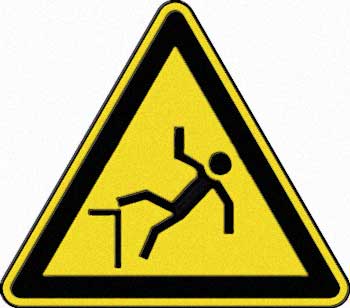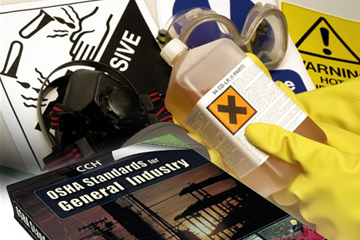 Unexpected releases of toxic, reactive, or flammable liquids and gases in processes involving highly hazardous chemicals have been reported for many years in various industries that use chemicals with such properties. Regardless of the industry that uses these highly hazardous chemicals, there is a potential for an accidental release any time they are not properly controlled, creating the possibility of disaster.
Unexpected releases of toxic, reactive, or flammable liquids and gases in processes involving highly hazardous chemicals have been reported for many years in various industries that use chemicals with such properties. Regardless of the industry that uses these highly hazardous chemicals, there is a potential for an accidental release any time they are not properly controlled, creating the possibility of disaster.
Tag: safety at work
What is “Fall Protection” and why is it so important?
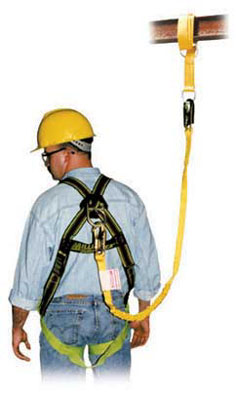 The leading cause of worker fatalities in construction work is from falls. In addition to the over 100 deaths per year caused by falls thousands more construction workers are injured each year by them, according to OSHA statistics. Therefore, the issues of fall protection and training are often large issues in construction site accident litigation.
The leading cause of worker fatalities in construction work is from falls. In addition to the over 100 deaths per year caused by falls thousands more construction workers are injured each year by them, according to OSHA statistics. Therefore, the issues of fall protection and training are often large issues in construction site accident litigation.
via What is “Fall Protection” and why is it so important? – Starr Austen & Miller LLP.
Safety and Health Add Value
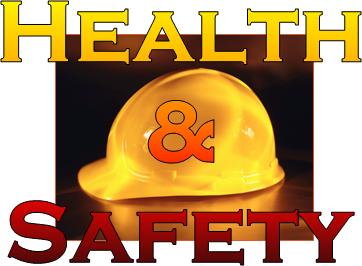 Addressing safety and health issues in the workplace saves the employer money and adds value to the business. Recent estimates place the business costs associated with occupational injuries at close to $170 billion – expenditures that come straight out of company profits.
Addressing safety and health issues in the workplace saves the employer money and adds value to the business. Recent estimates place the business costs associated with occupational injuries at close to $170 billion – expenditures that come straight out of company profits.
When workers stay whole and healthy, the direct cost-savings to businesses include:
- lower workers’ compensation insurance costs;
- reduced medical expenditures;
- smaller expenditures for return-to-work programs;
- fewer faulty products;
- lower costs for job accommodations for injured workers;
- less money spent for overtime benefits.
Safety and health also make big reductions in indirect costs, due to:
- increased productivity;
- higher quality products;
- increased morale;
- better labor/management relations;
- reduced turnover;
- better use of human resources.
Employees and their families benefit from safety and health because:
- their incomes are protected;
- their family lives are not hampered by injury;
- they have less stress.
Simply put, protecting people on the job is in everyone’s best interest – our economy, our communities, our fellow workers and our families. Safety and health add value to businesses, workplaces and lives.
Benefits of Risk Management
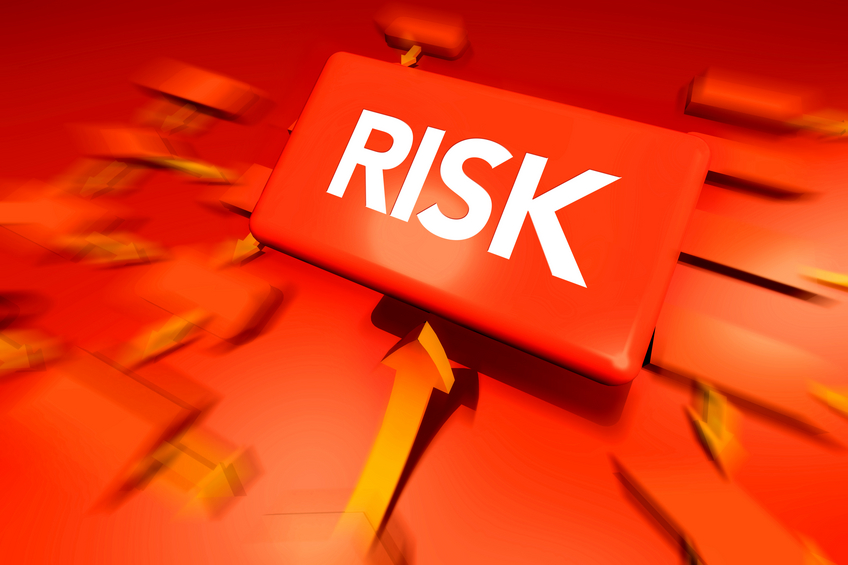 Risk management provides a clear and structured approach to identifying risks. Having a clear understanding of all risks allows an organization to measure and prioritize them and take the appropriate actions to reduce losses. Risk management has other benefits for an organization, including:
Risk management provides a clear and structured approach to identifying risks. Having a clear understanding of all risks allows an organization to measure and prioritize them and take the appropriate actions to reduce losses. Risk management has other benefits for an organization, including:
- Saving resources: Time, assets, income, property and people are all valuable resources that can be saved if fewer claims occur.
- Protecting the reputation and public image of the organization.
- Preventing or reducing legal liability and increasing the stability of operations.
- Protecting people from harm.
- Protecting the environment.
- Enhancing the ability to prepare for various circumstances.
- Reducing liabilities.
- Assisting in clearly defining insurance needs.
An effective risk management practice does not eliminate risks. However, having an effective and operational risk management practice shows an insurer that your organization is committed to loss reduction or prevention. It makes your organization a better risk to insure.
Protecting Your Eyes at Work
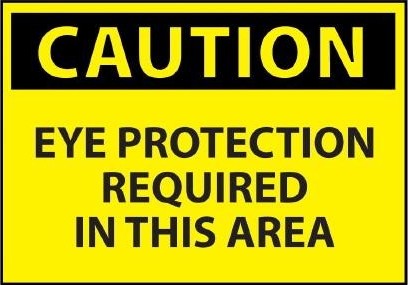 Eye injuries in the workplace are very common. The National Institute for Occupational Safety and Health (NIOSH) reports about 2,000 U.S. workers sustain job-related eye injuries that require medical treatment each day. However, safety experts and eye doctors believe the right eye protection could have lessened the severity or even prevented 90% of these eye injuries.
Eye injuries in the workplace are very common. The National Institute for Occupational Safety and Health (NIOSH) reports about 2,000 U.S. workers sustain job-related eye injuries that require medical treatment each day. However, safety experts and eye doctors believe the right eye protection could have lessened the severity or even prevented 90% of these eye injuries.
via Protecting Your Eyes at Work | American Optometric Association.
Strategies for an Aging Workforce
 The Bureau of Labor Statistics estimates that 25% of the workforce will be over 55 in 2020. That’s one in four workers — up from one in every five workers just two years ago. Why? In addition to Boomers, the elimination of mandatory retirement and the enactment of age discrimination laws accounts for some of this trend. Better life expectancy and health is partly responsible. And for most, early retirement is largely a thing of the past. Many workers now choose to or must remain in the workforce longer than they had originally planned.
The Bureau of Labor Statistics estimates that 25% of the workforce will be over 55 in 2020. That’s one in four workers — up from one in every five workers just two years ago. Why? In addition to Boomers, the elimination of mandatory retirement and the enactment of age discrimination laws accounts for some of this trend. Better life expectancy and health is partly responsible. And for most, early retirement is largely a thing of the past. Many workers now choose to or must remain in the workforce longer than they had originally planned.
The good news is that a well-designed workplace with positive policies and programs to optimize the health of aging workers benefits everyone. When work stations and job tasks are matched to the capacity of each worker, younger or older, everyone benefits. When workplace flexibility is maximized, when work is organized with personal health and well-being principles in mind, and when workplace policies consistently are viewed through their health effects on workers, employers and workers both win. This is also a way for employers to exercise excellent foresight to support ongoing organizational health for their companies and indeed for the U.S. economy, as well as the individual worker’s well-being. By preventing stresses or injuries that, over time, can have cumulative negative effects on a worker’s ability to work safely and productively, an employer can help assure that the U.S. continues to have a capable, experienced workforce.
Many effective workplace solutions are simple, don’t have to cost very much, and can have large benefits if implemented properly with worker input and support throughout all levels of management. Below are strategies for preparing your workplace for an older and healthier, safer workforce. Consider putting these in place today.
- Prioritize workplace flexibility. Workers prefer jobs that offer more flexibility over those that offer more vacation days. To the extent possible, give workers a say in their schedule, work conditions, work organization, work location and work tasks.
- Match tasks to abilities. Use self-paced work, self-directed rest breaks and less repetitive tasks
- Avoid prolonged, sedentary work – it’s bad for workers at every age. Consider sit/stand workstations and walking workstations for workers who traditionally sit all day. Provide onsite physical activity opportunities or connections to low-cost community options.
- Manage noise hazards (including excess background noise), slip/trip hazards, and physical hazards, conditions that can challenge an aging workforce more.
- Provide ergo-friendly work environments — workstations, tools, floor surfaces, adjustable seating, better illumination where needed, and screens and surfaces with less glare.
- Utilize teams and teamwork strategies for aging-associated problem solving. Workers closest to the problem are often best equipped to find the fix.
- Provide health promotion and lifestyle interventions including physical activity, healthy meal options, tobacco cessation assistance, risk factor reduction and screenings, coaching, and onsite medical care. Accommodate medical self-care in the workplace and time away for health visits.
- Invest in training and building worker skills and competencies at all age levels. Help older employees adapt to new technologies, often a concern for employers and older workers.
- Proactively manage reasonable accommodations and the return-to-work process after illness or injury absences.
- Require aging workforce management skills training for supervisors. Include a focus on the most effective ways to manage a multi-generational workplace.
via CDC – NIOSH Science Blog – Safer and Healthier at Any Age: Strategies for an Aging Workforce.
American Football: Fears Over Player Safety
 Some 100 million Americans will sit down to watch what they call the “greatest show on earth” this weekend – with the very future of a beloved sport apparently in doubt.
Some 100 million Americans will sit down to watch what they call the “greatest show on earth” this weekend – with the very future of a beloved sport apparently in doubt.
The Super Bowl is the showpiece of American Football – last year’s game was the most watched television programme in American history – but a dark shadow looms over the sport.
There is growing evidence that head injuries suffered on the field could be contributing to long-term damage among former players.
Researchers say head trauma from concussions can lead to a degenerative disease called Chronic Traumatic Encephalopathy (CTE), resulting in depression and other psychological effects.
Drugs and The Workplace, Not Good Friends
 Being under the influence of anything while at work can affect reaction time and reflexes, which can be disastrous. People who work under the influence cause accidents are often the ones who are injured. In fact, industries with the highest rates of drug use are the same as those that are the highest risk for injury in the first place. This includes construction, mining, manufacturing and wholesale.
Being under the influence of anything while at work can affect reaction time and reflexes, which can be disastrous. People who work under the influence cause accidents are often the ones who are injured. In fact, industries with the highest rates of drug use are the same as those that are the highest risk for injury in the first place. This includes construction, mining, manufacturing and wholesale.
According to OSHA, there are five separate elements that ensure a drug free workplace. These five elements are: 1) A policy that does not tolerate it. 2) Supervisor training. 3) Employee education. 4) Employee assistance. 5) Drug testing. OSHA concludes with the fact that there must be consideration for employee rights to privacy and that many workers with substance abuse problems can be returned safely to the workplace provided they have access to appropriate treatment. With the right addiction treatment program anyone can fully recover, with that drugs and the workplace can be taken care of and have no more problems.
via Drugs and the Workplace | Addiction Treatment Programs | Arizona Rehab.
Why is fall protection important?
Falls are among the most common causes of serious work related injuries and deaths. Employers must set up the work place to prevent employees from falling off of overhead platforms, elevated work stations or into holes in the floor and walls.
Portable Ladder Safety
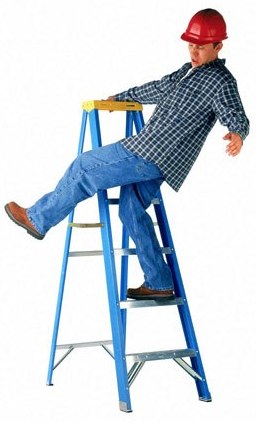 Falls from portable ladders (step, straight, combination and extension) are one of the leading causes of occupational fatalities and injuries.
Falls from portable ladders (step, straight, combination and extension) are one of the leading causes of occupational fatalities and injuries.
- Read and follow all labels/markings on the ladder.
- Avoid electrical hazards! – Look for overhead power lines before handling a ladder. Avoid using a metal ladder near power lines or exposed energized electrical equipment.
- Always inspect the ladder prior to using it. If the ladder is damaged, it must be removed from service and tagged until repaired or discarded.
- Always maintain a 3-point (two hands and a foot, or two feet and a hand) contact on the ladder when climbing. Keep your body near the middle of the step and always face the ladder while climbing (see diagram).
- Only use ladders and appropriate accessories (ladder levelers, jacks or hooks) for their designed purposes.
- Ladders must be free of any slippery material on the rungs, steps or feet.
- Do not use a self-supporting ladder (e.g., step ladder) as a single ladder or in a partially closed position.
- Do not use the top step/rung of a ladder as a step/rung unless it was designed for that purpose.
- Use a ladder only on a stable and level surface, unless it has been secured (top or bottom) to prevent displacement.
- Do not place a ladder on boxes, barrels or other unstable bases to obtain additional height.
- Do not move or shift a ladder while a person or equipment is on the ladder.
- An extension or straight ladder used to access an elevated surface must extend at least 3 feet above the point of support (see diagram). Do not stand on the three top rungs of a straight, single or extension ladder.
- The proper angle for setting up a ladder is to place its base a quarter of the working length of the ladder from the wall or other vertical surface (see diagram).
- A ladder placed in any location where it can be displaced by other work activities must be secured to prevent displacement or a barricade must be erected to keep traffic away from the ladder.
- Be sure that all locks on an extension ladder are properly engaged.
- Do not exceed the maximum load rating of a ladder. Be aware of the ladder’s load rating and of the weight it is supporting, including the weight of any tools or equipment.

